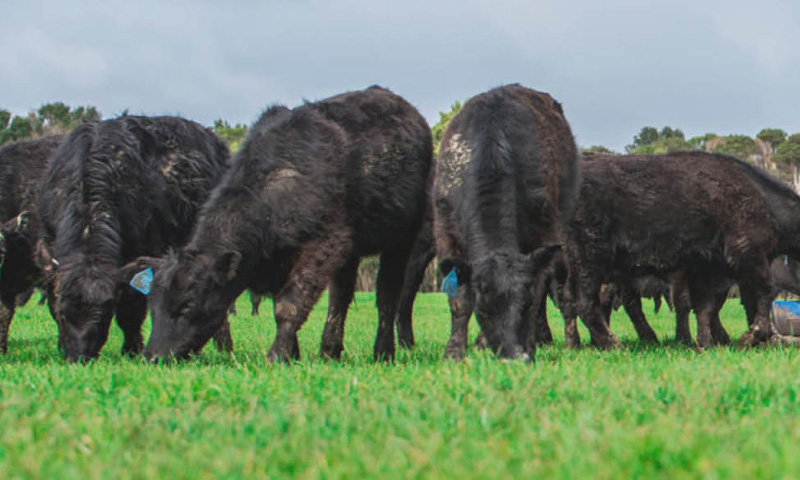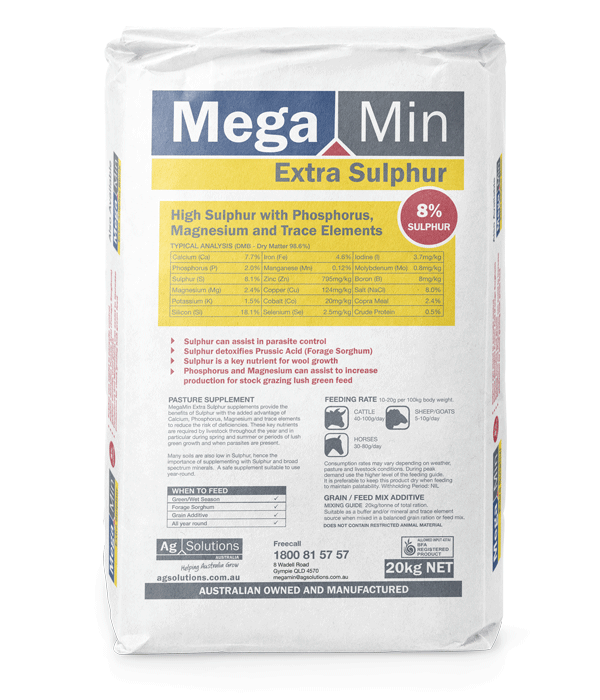A lot of livestock nutritional information available to farmers in Australia is focused on feeding animals during dry feed situations. Maintaining stock during drought or dry conditions can be costly and challenging for farmers and when the rain comes there is a huge sigh of relief. The common belief is now that we have lush green feed I can sit back and let the grass do its job. So now that it’s rained and your pasture is lush and green, the question to ask is, how can you add value to your operation?
Unfortunately sitting back and doing nothing is not always the best for the health and production of livestock and can at times be even more costly. From our experience in soil testing we are aware that there are many imbalances of key macro and trace minerals in many regions across Queensland and New South Wales. Getting a soil test can be a powerful tool for livestock, soil and pasture nutrition programs as it helps to give an indication of where certain mineral deficiencies may occur. AgSolutions can assist you with this and work with you to prepare a 3-year program to address priorities and assist you to increase your profits, production and fertility.
Did you know?
Some nutrients such as phosphorus, magnesium, copper, sulphur and cobalt play key roles in metabolism, appetite, feed intake and consequently deficiencies can impact on production. In fact, a key point to remember is if you want to bring out the best of an animal’s genetic potential and to have healthy, high producing livestock, is that they need a balanced diet. A balanced diet will mean that all requirements for energy, protein, fat, fibre, minerals, electrolytes, vitamins and water are being met.
If your area is deficient in Phosphorus…
When there is lush, green feed it generally means that protein and energy are no longer the most limiting nutrients and the next link in the chain is minerals. If you know that in your area phosphorus is a key limiting nutrient or a soil test indicates a phosphorus level below 10ppm Colwell P, then this deficiency can be directly affecting daily weight gains, fertility and your income. Recent MLA (2012) trials have indicated that phosphorus can impact on how many mouthfuls of grass your cattle will swallow each day and if they are eating more, they can produce more. There is a significant relationship between phosphorus and fertility, milk production and growth, therefore, if deficient cattle are supplemented with phosphorus there can be significant production gains to be made. All MegaMin products contain phosphorus but in 2017 AgSolutions launched MegaMin Extra Phos 8 to provide a solution for livestock with high requirements for phosphorus.
What about Sulphur?
Do you plan to have stock grazing forage sorghum? If so, you need to consider providing stock access to an adlib supplement that contains good levels of sulphur, such as MegaMin Extra Sulphur (available in both a loose supplement or lick block). Sorghum species are known to accumulate large quantities of cyanogenic glycosides which can convert to prussic acid. Robson (2007) reports that supplementation with sulphur will increase the animal’s efficiency at converting prussic acid to the non-toxic thiocyanate. This is supported by DAF (2014) where it is recommended to supplement stock on sorghum crops with sulphur as sulphur is required for detoxifying cyanide in the rumen and liver and sorghums are generally low in sulphur.

Certain areas have massive issues with ticks and buffalo fly and once again MegaMin Extra Sulphur can help. Supplementation with Sulphur has been associated with the reduction of internal and external parasites in livestock such as worms, cattle tick, lice and buffalo fly. A study conducted in South America into the differences in natural tick resistance due to sulphur level being supplemented found that there was a substantial increase in levels of natural resistance to ticks at the 8-12% sulphur levels in cows (Carlos, 2006).
Don’t forget Magnesium!
Forage crops (oats, wheat and rye) and rapidly growing, lush green pasture can have excessive amounts of some nutrients such as potassium for example and can be very limiting in others like magnesium. Stock that are grazing these plants in their vegetative growth stages can be prone to developing conditions such as scours, bloat and grass tetany, issues that can severely impact on your return on investment.
Magnesium is absorbed in the rumen and uptake is inhibited by high protein, high fatty acid concentrations and high potassium found in lush, green pastures and some cereal crops. Insufficient absorption of magnesium can lead to Grass Tetany and if stock are scouring on green feed they can quickly become deficient in magnesium.
A trial undertaken by Dove and McMullen (2009) found that there was a 31% increased weight gain when magnesium supplements were provided to lambs grazing cereals (wheat), so your investment in planting improved pastures or forages can pay greater dividends when you supplement with MegaMin Extra Magnesium.
What is the Solution?
To help combat the low fibre/high moisture issue with lush green forage it is important to provide an ad-lib fibre source (a palatable cereal hay is ideal) and make sure animals have a full stomach before allowing them access to lush green feed. Introduce stock to new feed sources gradually as this will allow the population of rumen microbes to adjust to the new diet. It is also beneficial to provide additional energy (cereal grain) to help balance the high protein intake. Most importantly, providing stock with a high-quality mineral supplement with a focus on the limiting nutrient can help increase the production potential on lush green feed as well as help protect against deadly conditions such as grass tetany and prussic acid poisoning.
Lush green feed is an important, cheap resource for farmers and if managed correctly some significant production results can be achieved. The early introduction of a quality supplements such as MegaMin Extra Phos 8, MegaMin Extra Sulphur, MegaMin Extra Magnesium and MegaMin Mineral Blend, providing animals with effective fibre and allowing rumen microbes time to adjust to feed changes can help animals to become much healthier and more productive from the onset of grazing lush green feed.
For further information, please contact AgSolutions on 1800 81 57 57.



